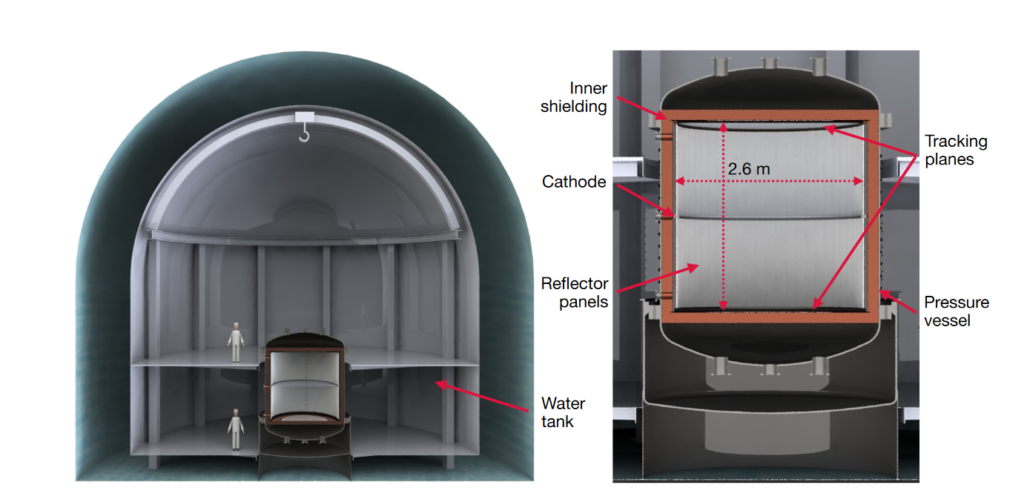A tonne-scale detector for neutrinoless double-beta decay
Deep below the Spanish side of the Pyrenees, we find the LSC (Laboratorio Subterráneo de Canfranc – Canfranc Underground Laboratory), where the NEXT experiment is taking place. Its goal is one of the remaining holy grails of particle physics: the proof that the neutrino is its own antiparticle, a result with profound meaning not only in the nature of the neutrino itself, but also in the creation of our universe.
Neutrinos are the only particles in the Standard Model that could be Majorana fermions, that is, completely neutral fermions that are their own antiparticles. Majorana neutrinos imply the existence of new physics at an energy scale inversely proportional to the observed neutrino masses; given that the neutrino mass is so tiny, the energy scale involved is extremely huge. This new-physics scale provides a simple explanation for the striking lightness of neutrinos, and is possibly connected with the predominance of matter over antimatter in the universe.
Radioactive isotope 136Xe can undergo a special kind of decay known as double beta decay. In that event, two electrons and two neutrinos are emitted from the xenon atom. If the neutrino is its own antiparticle, two neutrinos in the same region of space have a chance of annihilate themselves, and only electrons could be observed. The actual mechanism is rather complex, but at the end of the day, if the neutrino is a Majorana particle, a double beta decay could only emit two electrons and not the whole pack of electrons and neutrinos. NEXT aims to detect precisely that: a neutrinoless double beta decay.
So, if we are using xenon to detect the decay, how much xenon would be the optimal amount to be used? We could intuitively think that the more the better from a purely scientific point of view, and, then, technical and cost factors would apply to build an optimization model. We need to know the function that relates amount of xenon with increase in sensitivity, first.

Now, a team of researchers has explored 1 the reach of a tonne-scale version of NEXT considering only incremental improvements over the design of NEXT-100, the latest stage of the NEXT detector series, expected to start operation in 2022. It has found that through a combination of good energy resolution, tracking-based event identification, radiopurity and shielding, a NEXT detector with active mass in the tonne range would be able to improve the current limits by more than an order of magnitude in 5 years of operation.
The researchers found that high-pressure xenon gas technology offers a scalable and modular approach to double decay searches, with a tonne-scale sensitivity that depends primarily on exposure and not on the details of how the total active mass is deployed. Larger detectors would not exhibit an increase in background rate, and several detectors could be deployed in parallel to reach multi-tonne target masses while still taking advantage of the full volume of active isotope.
A one-tonne detector may be not a panacea, though, but a stepping stone in a more ambitious program that includes the development of single-molecule fluorescence imaging with barium tagging.
Author: César Tomé López is a science writer and the editor of Mapping Ignorance
Disclaimer: Parts of this article may have been copied verbatim or almost verbatim from the referenced research paper/s.
References
- The NEXT Collaboration (2021) Sensitivity of a tonne-scale NEXT detector for neutrinoless double-beta decay searches Journal of High Energy Physics doi: 10.1007/JHEP08(2021)164 ↩